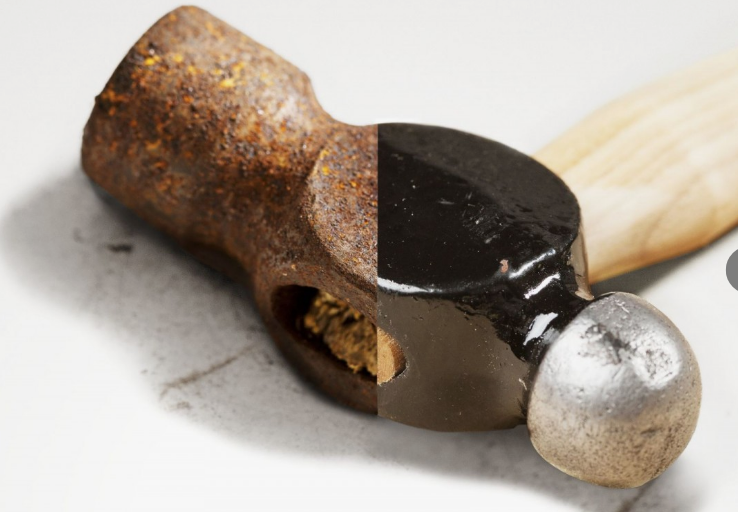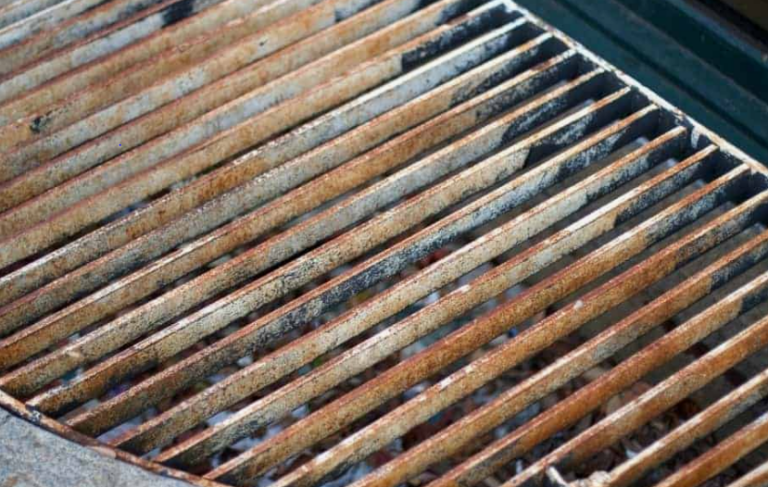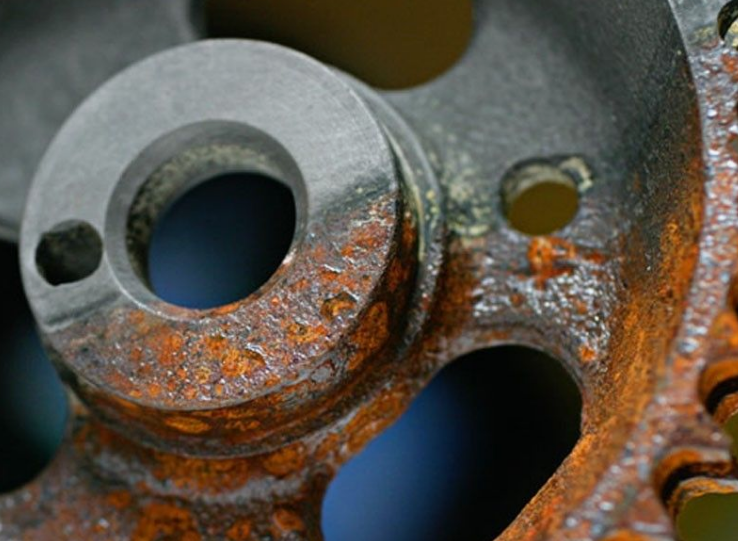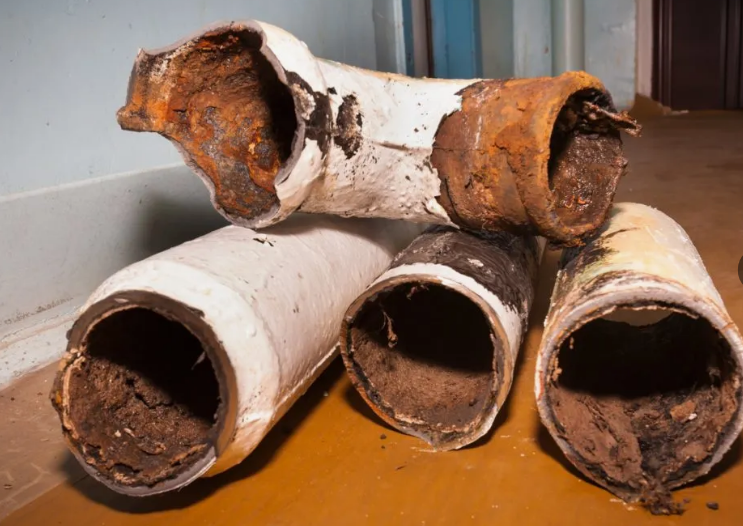If you’ve just discovered rust on your beloved cast iron skillet or pan, don’t panic—it’s not ruined! Rust is a common issue with cast iron, but it’s also one of the easiest things to fix. With the right tools, techniques, and know-how, your cast iron can be as good as new in no time. To prevent rust from coming back, it’s important to keep your cast iron pan from rusting with simple care tips.

This guide will walk you through everything you need to know about removing rust from cast iron, preventing it from happening again, and restoring that prized seasoning layer for years of happy cooking.
Understanding Rust on Cast Iron
Why Does Cast Iron Rust?
Rust forms when iron reacts with oxygen and moisture, creating iron oxide. Cast iron is particularly vulnerable due to its porous surface, which can trap water if not dried and seasoned properly.
Common Misconceptions About Rust
- “Rust means it’s ruined.” Not true! Cast iron is incredibly forgiving, and even heavy rust can be removed.
- “Rust makes it unsafe to use.” Surface rust doesn’t make cast iron unsafe. Once the rust is removed, your cookware will be good as new.
Rust is inevitable if you don’t care for your cookware properly, but don’t worry—it’s completely reversible with the right steps!
The Essential Tools You’ll Need for Rust Removal
Before you start, gather the following tools and materials for restoring your cast iron cookware:
- Soft Scouring Pad or Steel Wool: Ideal for scrubbing off rust without damaging the pan.
- White Vinegar: A natural rust remover that’s gentle yet effective.
- Baking Soda (optional): Helps neutralize vinegar after soaking.
- Stiff Brush or Nylon Scrubber: For thorough cleaning in grooves or ridges.
- Warm Water: Necessary for cleaning.
- Dish Soap (mild): Use sparingly to clean the pan without stripping any remaining seasoning.
- Dry Cloth or Paper Towels: For thoroughly drying your cookware post-cleaning.
- Cooking Oil (e.g., Flaxseed, Vegetable, or Canola Oil): To restore seasoning after rust removal.
- Oven or Stovetop: For the re-seasoning process.
Pro Tip: Avoid using highly abrasive materials like harsh commercial cleaners or wire brushes—they might scratch the surface of your cast iron.
Step-by-Step Guide to Removing Rust from Cast Iron
Follow these simple steps to bring your cast iron cookware back to life.
Step 1: Assess the Damage
Take a good look at your cookware. Is the rust limited to a few small spots, or has it covered most of the pan? This will determine how long you need to work on the restoration process.
Step 2: Scrub Away the Rust
Using a soft scouring pad or steel wool, scrub the rusted areas gently but firmly. Focus on removing all visible rust. Rinse occasionally with water to check your progress.
Step 3 (Optional): Try a Vinegar Soak
For stubborn rust, soak the pan in a solution of equal parts water and white vinegar for up to eight hours. Vinegar helps break down tough rust.
Important Note: Don’t soak it for too long; vinegar can damage cast iron with prolonged exposure.
Step 4 (Optional): Use Baking Soda
If you used vinegar, sprinkle the pan with baking soda afterward and scrub to neutralize the acid. This ensures no residue is left behind.
Step 5: Clean and Dry Thoroughly
Once the rust is gone, wash the pan with mild dish soap and warm water. Rinse completely, then dry it immediately with a cloth or paper towels to prevent new rust from forming.
Preventing Rust: Proper Cast Iron Care Tips
Now that your cast iron is rust-free, follow these care tips to keep it that way:
- Dry Immediately: Always dry cast iron completely after washing. If possible, heat it on the stovetop for a few minutes to evaporate moisture.
- Oil After Every Use: Lightly rub a thin layer of oil onto the surface after cleaning to protect it from moisture.
- Proper Storage: Store cast iron in a dry spot and consider using a paper towel between stacked pans to absorb any moisture.
- Avoid Prolonged Exposure to Acidity: Acidic foods like tomatoes and citrus can break down the seasoning layer if left in the pan for too long.
Restoring the Seasoning on Your Cast Iron
After rust removal, your pan might look dull or bare. Don’t worry—this is where re-seasoning comes in.
How to Season Cast Iron:
- Preheat your oven to 450°F (232°C).
- Coat the entire pan, inside and out, with a thin layer of oil (we recommend flaxseed or vegetable oil).
- Place the pan upside down in the oven with a tray underneath to catch drips.
- Bake for 1 hour, then let it cool completely in the oven.
Voilà! Your cast iron is now seasoned and ready for action.
FAQs on Cast Iron Rust and Maintenance
Can I use soap on my cast iron pan?
Yes, mild soap can be used occasionally to clean cast iron. Just remember to re-oil the pan afterward to maintain its seasoning.
What is the best oil for seasoning cast iron?
Flaxseed oil creates a hard, durable layer of seasoning, but vegetable or canola oil works well too.
Can I prevent rust if I don’t use my cast iron often?
Absolutely. Coat the surface lightly with oil and store in a dry, low-humidity environment.
How can I remove rust from cast iron with salt?
Salt is a great, simple solution for removing rust from cast iron cookware. Start by sprinkling coarse salt generously onto the rusty area. Then, using a damp cloth or a cut potato (yes, a potato!), scrub the surface in a circular motion. Rinse thoroughly with warm water and repeat if needed. Once the rust is gone, dry the cast iron completely and apply a thin layer of oil to protect it from future rust.
What’s the fastest way to remove rust from cast iron?
The quickest method is to use a combination of salt and a little elbow grease. Sprinkle coarse salt over the rusted area, then scrub it with a stiff brush or steel wool. For stubborn spots, adding a few drops of water or oil can help. Once the rust is removed, rinse, dry completely, and season your cast iron with oil.
How do I remove rust from cast iron with baking soda?
Baking soda is another effective and non-toxic option. Make a paste with baking soda and water, then apply it to the rusty surface. Scrub gently with a brush or steel wool until the rust is loosened. Rinse it off with warm water, and inspect for any leftover spots that might need a second round. Dry your cast iron thoroughly and season it to prevent future rusting.
What’s the best way to remove rust from a cast iron skillet?
For rust on skillets, you can rely on any of the above methods (salt, baking soda, etc.). However, you may also try the oven-cleaning method for deeper restoration. Scrape off as much rust as possible, then coat the skillet with a mixture of baking soda and water, or salt. Scrub well, rinse, and dry. If it’s heavily rusted, use steel wool or sandpaper. Finish by re-seasoning to regain that non-stick, glossy finish.
How do I remove rust from a cast iron stove?
Cast iron stoves often develop rust due to long-term exposure to moisture. Start by brushing off loose rust with a wire brush or steel wool. For stubborn rust, soak a cloth in a mixture of baking soda and water (or salt and water) and rub it over the affected areas. Rinse gently with a damp cloth, then dry completely. If the surface is exposed to open air, apply stove-black polish or a thin oil layer to protect it.
How do I remove heavy rust from cast iron?
For heavy rust, you’ll need more persistent scrubbing. Start with steel wool or fine-grit sandpaper to remove as much rust as possible. Then, soak the cast iron in a solution of warm water and a small amount of gentle dish soap for 10-15 minutes. After soaking, apply either coarse salt or baking soda and scrub thoroughly. For extreme cases, consider electrolysis rust removal (a more advanced method) or professional restoration services.
Is rust on cast iron dangerous?
Good news—rust on cast iron isn’t dangerous. Cooking on cast iron with a light amount of rust likely won’t harm you, but it can affect the flavor and quality of your food. However, you should strive to remove rust and re-season your pan as soon as possible to keep it in top condition. Maintaining your cookware regularly prevents rust from building up over time.
How can I remove rust from cast iron without vinegar?
If you want to avoid vinegar, you can use alternatives like salt, baking soda, or even commercial rust removers specifically designed for cast iron. Salt and a potato make a great combination, while baking soda paste works wonders as well. Both are safe and won’t harm your cookware when cleaned and seasoned properly afterward.
A Labor of Love for Timeless Kitchenware
Bringing your rusted cast iron cookware back to life isn’t just about practicality—it’s about preserving a timeless piece of kitchen history. With regular care and seasoning, your skillet or pan will last for decades, becoming better with every use.
Have you successfully restored your rusted cast iron? Share your success stories and photos with our community of passionate kitchenware enthusiasts! Together, we can celebrate the art of cast iron cooking.




